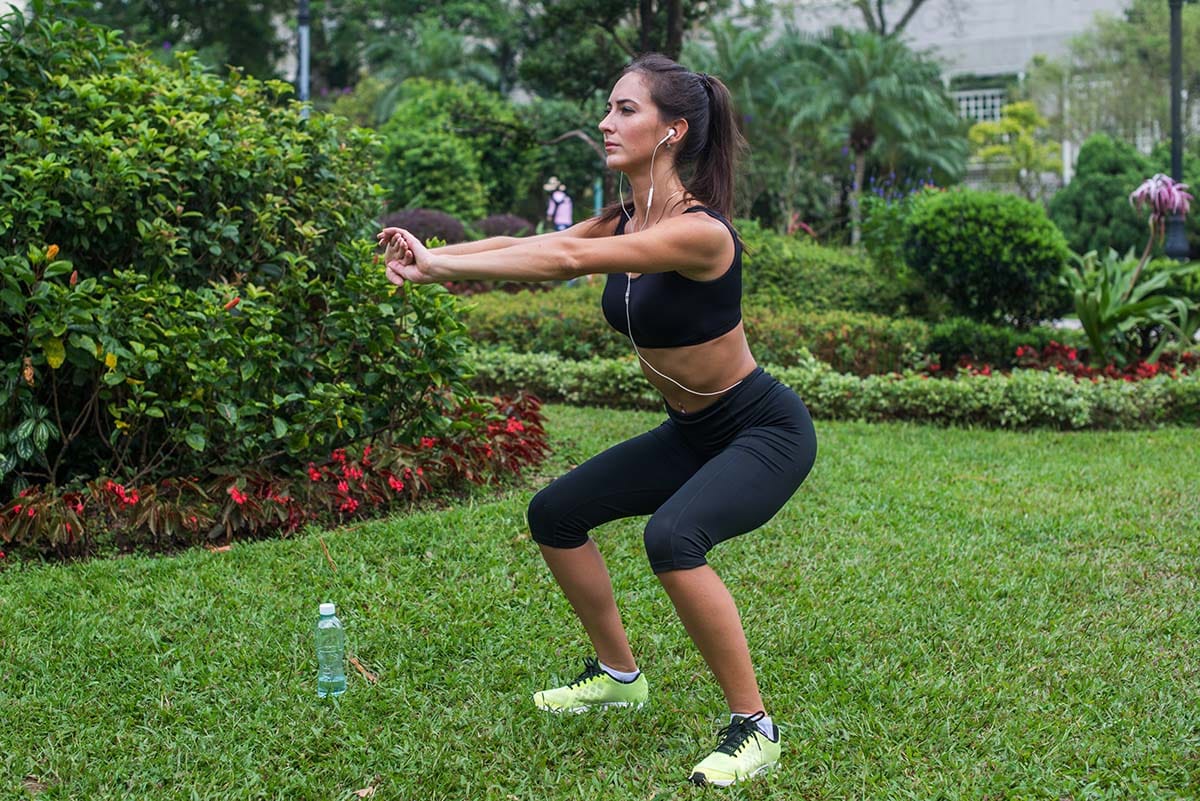Hindu Squats: Benefits, Technique, and Tips
If you're looking for a unique and effective bodyweight exercise, the Hindu squat might just be what you need.
This ancient exercise, rooted in traditional Indian wrestling training, offers several benefits ranging from strength to flexibility and overall fitness.
In this guide, we'll explore everything about Hindu squats, from their benefits to how to perform them correctly. By the end, you'll be ready to incorporate Hindu squats into your workout routine and enjoy all the perks they offer.
What is a Hindu Squat?
So, what exactly is a Hindu squat? Also known as "Baithak," this exercise is a dynamic bodyweight movement that engages multiple muscle groups at once.
Unlike your regular squats, Hindu squats involve a fluid, rhythmic motion that boosts both strength and flexibility. Indian wrestlers have been doing these for centuries, and it's no wonder: they're fantastic for building lower body strength and endurance.

Benefits of Hindu Squats
Now, let’s see why you should try this exercise. Here are the benefits of Hindu Squats:
1. Strength and Muscle Development
Hindu squats are fantastic for building strength. They primarily target your quads, hamstrings, glutes, and calves. The continuous up-and-down motion, allied to the deep squat position, keeps these muscles working hard throughout the exercise. Over time, you'll notice significant strength gains and will even be able to work on a round butt.
2. Improved Flexibility
One of the coolest things about Hindu squats is how they improve your flexibility. The full range of motion required helps loosen up your hips, knees, and ankles. This increased flexibility can boost your overall athletic performance and help prevent injuries.
3. Cardiovascular Endurance
If you pick up the pace a bit, Hindu squats can also give you a great cardio workout. Your heart rate will go up, providing a cardiovascular boost along with strength training. It's like hitting two birds with one stone!
4. Enhanced Balance and Coordination
The dynamic nature of Hindu squats challenges your balance and coordination, especially if you try them on an uneven surface or add some variations. This can translate to better performance in various sports and physical activities.
5. Functional Fitness
Hindu squats mimic natural movements, making them super functional. This means the strength and flexibility you gain can be directly applied to everyday activities like lifting, bending, and climbing stairs.

How to Perform Hindu Squats Correctly
Now that you know all the benefits, here are some step-by-step instructions on how to properly execute the Hindu squats:
Starting Position
- Stand with your feet shoulder-width apart.
- Extend your arms straight out in front of you at shoulder height.
- Keep your spine neutral and engage your core.
Descending Phase
- Begin by bending your knees and lowering your hips towards the ground.
- At the same time, sweep your arms down and back in a circular motion.
- Keep your heels slightly elevated and balance on the balls of your feet.
- Continue lowering until your thighs are parallel to the ground or lower.
Ascending Phase
- Push through the balls of your feet to rise back up to the starting position.
- As you come up, sweep your arms forward and up, completing the circular motion.
- Exhale as you reach the top.
Repetition
- Repeat the movement and try to add some rhythm to it
- Aim for a continuous flow, minimizing pauses between reps.
Common Mistakes to Avoid
- Rounding the Back: Keep your spine neutral to avoid straining your lower back.
- Knee Alignment: Make sure your knees track over your toes and don't collapse inward.
- Heel Elevation: Keep your heels slightly elevated, but don't lift them too much, which can throw off your balance.
Tips for Incorporating Hindu Squats into Your Routine
The Hindu squats are not the easiest movement to execute. It requires that you get into a rhythm to be effective, and for that to happen, you need to be very comfortable with the exercise. Here are some tips to help you with your Hindu squat progression:
1. Start Slow
If you're new to Hindu squats, start with a comfortable number of reps and gradually increase as you get stronger and more comfortable. Aim for 2-3 sets of 10-15 reps to begin with.
2. Focus on Form
Good form is key to getting the most out of Hindu squats and avoiding injuries. Take your time to master the technique before ramping up the intensity or volume.
3. Combine with Other Exercises
Hindu squats can be a great addition to a well-rounded fitness routine that includes other bodyweight exercises like dips, push-ups, kettlebell lunges, and planks. This balanced approach ensures comprehensive strength and conditioning.
4. Use Variations
To keep things interesting and challenging, try different variations of Hindu squats. You can do single-leg Hindu squats, add a jump at the top, or even add weights.

Frequently Asked Questions (FAQs)
Do Hindu squats build glutes?
Of course! The deep squat position and the continuous motion of the Hindu squats are perfect for building a heart-shaped butt. With time, you'll notice improved muscle tone and strength in your glutes, along with other lower body muscles.
How to breathe during Hindu squats?
Breathing correctly is crucial for maximizing the benefits of Hindu squats and maintaining proper form. Here's a simple guide:
- Inhale: As you descend into the squat, breathe in deeply through your nose. This helps stabilize your core and prepare your body for the movement.
- Exhale: As you ascend back to the starting position, exhale through your mouth. This helps you maintain control and power through the movement.
Why are they called Hindu squats?
The name "Hindu squat" comes from the exercise's origins in traditional Indian wrestling training. Indian wrestlers, known as "Pehlwans," have been using this exercise for centuries to build strength, endurance, and flexibility. The term "Hindu" reflects the cultural and historical roots of the exercise.
What are the differences between Squats and Hindu Squats?
While both squats and Hindu squats are excellent lower-body exercises, there are some key differences:
- Movement Pattern: Traditional squats involve an up-and-down motion, while Hindu squats include a circular arm movement and a more fluid, rhythmic motion.
- Foot Position: In Hindu squats, the weight is balanced on the balls of the feet. In traditional squats, the feet remain flat on the ground.
- Range of Motion: Hindu squats typically involve a deeper squat position, which enhances flexibility and engages the muscles differently compared to traditional squats.
- Cardiovascular Component: Hindu squats, especially when performed at a fast pace, can provide a cardiovascular workout in addition to strength training.
Can Hindu squats be done with added weight?
Yes, Hindu squats can be done with added weight, but it requires some modifications. Since the traditional Hindu squat involves significant arm movement, you can hold a dumbbell or kettlebell close to your chest, but this will prevent you from doing the staple circular arm movement of the exercise.
Alternatively, you can use a weighted vest, which allows you to maintain the arm movement while adding resistance. Just make sure to start with a manageable weight and maintain proper form to avoid injury. Adding weight can help you build even more strength and muscle over time.
Conclusion
There you go! You are now ready to take on the Hindu squats and sculpt your dream physique. By adding this ancient movement to your routine, you can boost your physical capabilities and achieve a well-rounded level of fitness. Remember, consistency and proper form are the keys to seeing results in your fitness journey.
Ready to say goodbye to pancake butt? We’ve made it simple to work on customized fitness plans or to introduce a little friendly competition to your fitness community by sharing exercises with your friends. Get started for free through the Flex fitness app.
Related articles


Get fit with Flex
Build muscle & lose weight fast for free.
Available on iPhone + Apple Watch





